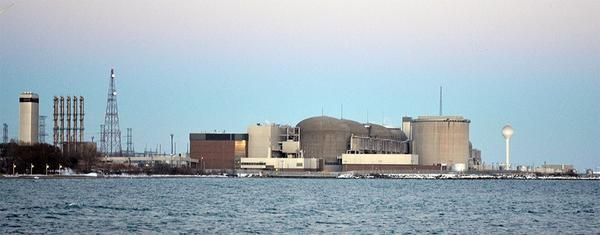Blogs in Motion: Nuclear Energy
Welcome back to Blogs in Motion! This entry, we're taking a look at nuclear energy and its potential as a long-term solution to our dependence on fossil fuels.
Nuclear power has already had a profound impact on humanity’s growing energy needs. As of 2014, there are nearly 450 reactors worldwide operating in 30 different countries, accounting for 17% of the world’s collective electrical production. However, since the 1970s, a debate began regarding the future of nuclear power going forward into the 21st century. Before we get into that, let’s examine how nuclear power works in a basic sense.
Nuclear energy generation involves the controlled splitting of uranium atoms inside a reactor to produce heat energy, a process known as “fission”. This process begins with solid pellets composed of uranium (U-238) as well as a trace amount of U-235. These spherical or cylindrical pellets are arranged in linear fuel rods and submerged in heavy water inside the reactor to control and maintain the nuclear reaction. The fuel rods are bombarded with neutrons, causing the uranium atoms within to heat and split. The fission process occurring within the reactor produces heat energy in the form of super-heated steam and that steam is then used to drive turbine generators, producing high amounts of electrical energy. Nuclear power plants produce their electricity via turbine-generation in a similar manner to coal and gas-powered stations. The key difference being how the heat energy was obtained.

The Pickering Nuclear Generating Station in Ontario, Canada
However, no system is perfect and so our first question is: What are the drawbacks of increasing our dependence on nuclear power?
The first thought on most people’s minds when it comes to nuclear power is: human error. Chernobyl, Three Mile Island, Fukushima. These names are locked in the public’s mind. We’ve seen the disastrous effects of nuclear plant malfunctions due to poor training or lack of proper containment protocols. Accidents can happen and there will always be a risk vs. reward argument when it comes to nuclear power. In order for us to truly rely on nuclear power and avoid critical contamination, we need trained, proficient experts to handle nuclear and radioactive materials in an environmentally responsible way. Human error will always be a factor, but the risk can be minimized with the right people and the right training. Location matters also, a nuclear power plant will need access to water, an ocean shoreline has drawbacks versus protected lakes and rivers. The danger from large waves and surge are very real for coastal installations, care must be taken to build on high firm land.
Additionally, it’s worth noting that like fossil fuels, uranium is also a finite resource. Although the amount of energy generated from fission reactions is far greater than fossil fuels, it is still dependent on a limited resource that is somewhat scarce on Earth and is therefore not infinitely renewable. Finally, the issue of radioactive waste is one that we still need to solve. During fission, a split uranium atom can absorb incoming neutrons which can lead to the creation of plutonium, a potentially dangerous element with a half-life of up to 24,000 years. Nuclear plants today have qualified professionals and thorough measures in place to handle radioactive waste with proper care and in ways that are not harmful to people or the environment, but as we know, human error is always a consideration. Properly disposing and handling of radioactive waste is an issue that will have to be monitored closely in the future.
With the risks presented, our question now becomes: What are the benefits of supporting global energy production with nuclear power?
Despite some common misconceptions, the creation of nuclear energy is actually not very impactful on the environment in and of itself. The production of nuclear power emits little to no carbon dioxide, sulfur dioxide or nitrogen oxides, in stark contrast to traditional power plants. Nuclear power plants can also produce power at a more stable rate without interference from a lack of sunshine or wind. In fact, a nuclear reactor’s only environmental consideration is access to a natural source of cooling water to aid with the heat buildup. As an alternative energy source, nuclear power is a far more consistent provider of power, making it ideal to operate along with environmentally-driven power sources.
Nuclear energy is also in a good position for large-scale deployment. Although initial construction efforts for new power plants can be high, the maintenance costs are substantially lower than fossil fuel plants, as a much larger amount of power is generated by the splitting of uranium-based atoms as opposed to carbon atoms. In fact, any given weight of uranium will produce as much as a million times more power than an equal amount of any carbon-based reaction! This is a critical consideration given the increasing needs of dependable energy in a more technologically-focused society.
Ultimately, the use of nuclear power is a highly divisive issue with strong points on both sides of the argument. The benefits of using nuclear as a long-term power substitute are both numerous and worthwhile, however it’s impossible to ignore the potential implications for a power source as large in scale as nuclear energy. Regardless, it’s important to keep the discussion going as the use or non-use of this alternative energy source is a critical topic that we all need to consider.
What are your thoughts on the use or non-use of nuclear energy? Should nuclear power become the primary provider to global energy, or should we focus more on other alternatives? Let us know in the comments below or on our social media channels.